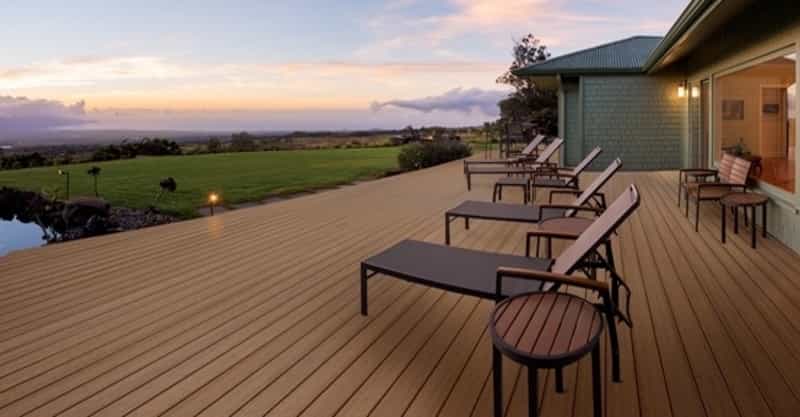When it comes to garden design, decking is an extremely popular choice among many homeowners and landscapers because it provides a practical space that adds to and improves the appearance of your outdoor space. It also gives you an area that can be used for lots of different things.
These include a space where you can place outdoor furniture to relax with family and friends, a space where a barbecue can live for those late summer parties or where you can decorate with a standout water feature, the possibilities are truly endless.
However, the type of decking that you choose to install in your garden will have a huge effect on, not only how your garden looks, but on how much care and attention you will have to give it, with different deck types requiring varying levels of upkeep. Knowing what type of material you’ll be using is an important key in decking like why is cedar timber used in sauna? – because cedar timber can withstand wet conditions for a longer period of time.”
Want to learn more? Keep reading to find out…
Different types of decking
As mentioned above, decking is available in many different forms, all of which offer different advantages and drawbacks. The main decking types used by homeowners up and down the country fall into three main categories:
- Timber
- Plastic
- WPC
Timber decking is the common, natural wood decking used by the majority of homeowners, plastic decking is the cheaper, lower-upkeep version of timber and WPC (also known as composite) decking is a combination of both. This may seem a little confusing at first, so to make things a little clearer, we’re going to break it down in a way that everyone can understand.
Timber decking
This type of decking doesn’t need much explaining. It is the natural wood decking that is used by the majority of homeowners when it comes to adding a deck to their outdoor space. It is readily available from all sorts of outdoor design and landscaping retailers, is fairly easy to install depending on the actual design of the deck and offers that natural wood-look and feel that enhances the appearance of your garden.
Plastic decking
The difference between plastic and timber decking doesn’t require much explanation. Timber decking is made from natural wood, whereas plastic decking is manmade using synthetic materials. Despite it not offering the organic wood aesthetics that you get from natural timber decking, plastic decking offers much lower upkeep requirements than timber decking, where zero staining, sealing or painting is required to make it look good. It is also often a cheaper option compared to timber decking. However, despite these advantages, the drawbacks of plastic decking are huge.
As a result of being produced entirely by synthetic materials with no real protection from the elements, plastic decking is prone to flexing and splitting, meaning it often has to be replaced. This obviously, is not something that any homeowner wants to do, and means the money that is often saved by installing a plastic deck is then spent when replacing it.
WPC decking
WPC decking, known more commonly as composite decking, is a superior decking type that combines all of the advantages of natural timber and plastic decking. Unlike plastic decking, composite is created using a combination of real wood and synthetic materials, resulting in a sort of ‘semi-synthetic’ product. This results in a deck board that looks just as real as natural wood decking, with all of the low-maintenance properties of plastic decking – the best of both worlds!
In addition to this, composite decking can be ‘capped’ with a protective polymer sleeve that offers extra protection against the elements, meaning it is extremely unlikely to warp and bow in the way that plastic decking does. Of course, as a result of the superior performance on offer, composite decking carries a higher price than both timber and plastic decking, but as they say ‘you get what you pay for’.
Composite decking can come with lifetime warranties of up to 30-years, meaning you won’t have to replace your deck for three whole decades, whereas plastic and timber carry warranties of nearer five to ten years. This, coupled with the time saved on very little upkeep requirements makes composite decking the smarter choice for those who have a little extra budget to work with when planning a garden redesign.
So, in answer to this blog’s title ‘are composite decking and plastic decking the same thing’, definitely not!
Plastic decking is made entirely from synthetic material and offers a quick and cheap decking solution for those that do not care for high maintenance requirements. The downside? It often needs to be replaced due to bowing and splitting. Composite decking, on the other hand, is produced using a mixture of natural and synthetic materials, so it offers far superior quality when it comes to longevity and stability. It does cost a little more, but it’s worth it in the long run.
Which would you choose? The choice is ultimately down to how much money you are willing to part with – but for a deck that lasts the test of time and doesn’t require much maintenance, composite decking is the way to go.


